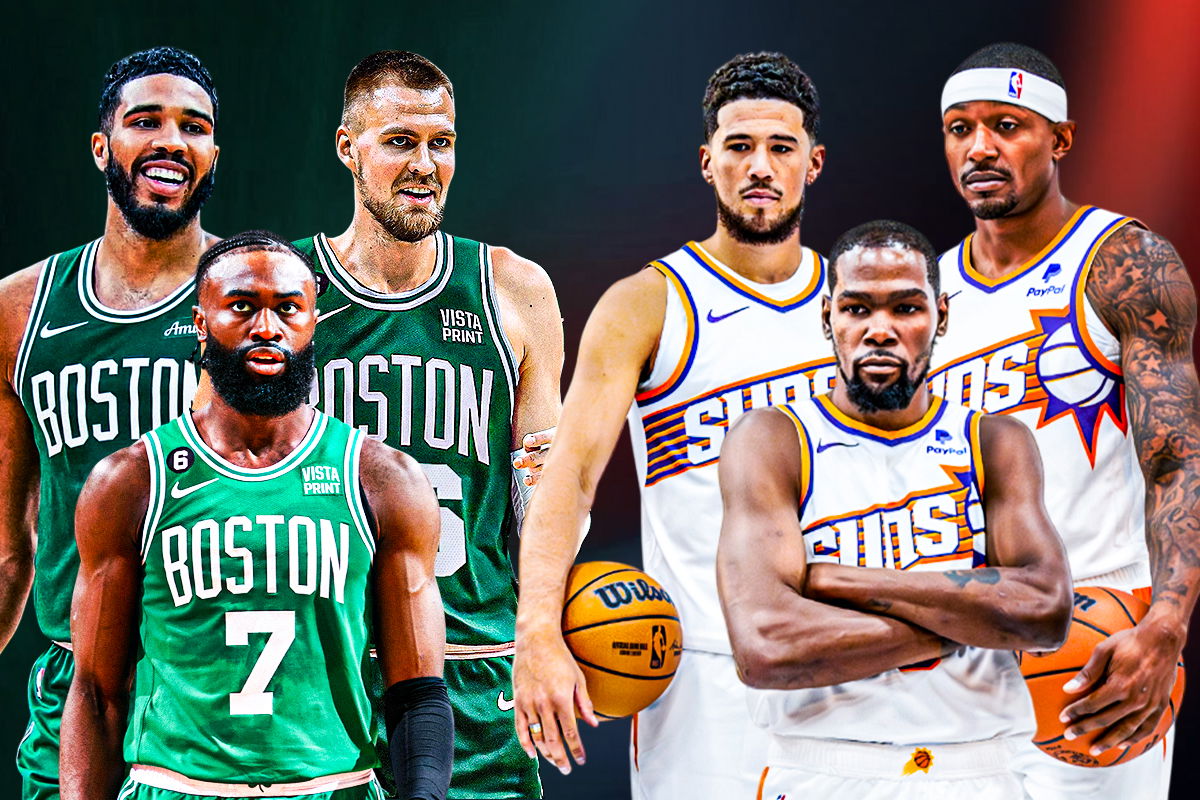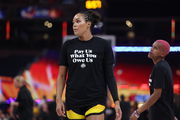

LeBron James’ ‘The Decision’ changed basketball as we know it, and the NBA is desperately trying to change it back! We’ve seen some real heavy-hitting teams in the league–the ‘96 Chicago Bulls, the ‘84 Boston Celtics, and the Showtime Lakers, just to name a few–but this was different. James’ move to Miami was one of the first instances in which several top-tier players ended up mutually deciding on a free-agency landing, creating a super-team to be reckoned with!
Watch What’s Trending Now!
Afterwards, we got to witness the creation of otherwise impossible teams like the 2017 Warriors and the 2019 Nets. According to some fans, these overpowered rosters ruined the fun of basketball, while others just went with the flow. And it’s not like the NBA hasn’t taken note of it! Adam Silver and the NBPA are doing their best to make basketball fun again, but what are the steps that they’re taking? Let’s find out!
ADVERTISEMENT
How the NBA & NBPA are combating the creation of super-teams
When a superstar is traded, or signs somewhere new, we often talk about terms like ‘salary cap’, ‘luxury tax’, or ‘first apron’ and ‘second apron’ restrictions on teams. But where did this system evolve from? Well, the soft salary cap of the NBA wasn’t like this from the start. In fact, it took many years to develop into such a nuanced system, and it all started with the 1998 lockout!
Kevin Garnett, through his ‘Bird rights’, signed a humongous $126 million extension, and that was the straw that broke the camel’s back. Team owners pushed for changes in the Collective Bargaining Agreement, and the ensuing dispute and lockout turned into the rudimentary beginnings of our current financial rules.
Top Stories
Lakers Duo Close to Luka Doncic, JJ Redick Ready to Bid LA Goodbye in Depth Trades – Insider

Did Zion Williamson Slide Into Sydney Sweeney’s DMs? Fact Checking the Viral Screenshot

DiJonai Carrington Publicly Criticizes WNBA’s ‘Greedy’ CBA Approach While Addressing League’s Unrivaled Stance

WNBA Responds to WNBPA Strike Authorization Vote With Official Statement

Calls Mount Against Dillon Brooks For ‘Intentionally’ Hurting Stephen Curry

As per the 2024 Collective Bargaining Agreement, these are the new financial thresholds:
ADVERTISEMENT
1) Salary Cap: $140.6 million
2) Luxury Tax Line: $170.8 million
ADVERTISEMENT
3) First Apron: $178.1 million
4) Second Apron: $188.9 million
And when teams surpass each threshold, they get more and more restrictions placed upon them. In the modern NBA, standard max contracts take up anywhere between 25% to 35% of the salary cap, and even have annual raises of anywhere between 5% and 8%! So basically, this CBA has made it next to impossible for teams to stack rosters with superstars without incurring heavy financial losses.
ADVERTISEMENT
Teams exceeding the luxury tax line have to pay escalating fines, amounting to about $3.75 per dollar over the limit. According to a 2022 article by Forbes, teams like the Golden State Warriors, Brooklyn Nets, and New York Knicks have paid a combined total of around $1 billion in luxury taxes. These aren’t small amounts, and definitely make the owners think twice before trying to construct super-teams. Exceeding the second apron carries dire consequences for any team that ends up doing so, with repercussions such as frozen draft picks, trade limitations, and no mid-level exceptions.
However, we’ve still seen some really strong, organically constructed contenders in recent times, and the financial thresholds will eventually make the teams suffer in that scenario as well. But what kind of impact have these financial rules had on the league so far?
ADVERTISEMENT
What does this mean for teams like Boston, OKC, and the NY Knicks?
Boston’s title run last year was simply legendary. Can we all agree on that? It was the superteam of all superteams! The combination of Jayson Tatum, Jaylen Brown, and Kristaps Porziņģis was too much for the league to handle. However, it might’ve also been too much for the team owners to handle as well! Boston’s owner, Wyc Grousbeck, openly commented on the NBA’s salary cap system earlier in March 2025.
“It’s not the luxury tax bill, it’s the basketball penalties.” He said, talking about how the entire system was unsustainable for top-level teams. Grousbeck predicted that in the next 40 years of the CBA, nobody is going to stay in the second apron for more than two years. And when we take a look at the numbers? It makes sense!
The Boston Celtics’ payroll is going to fall in the range of $227 million for the upcoming year, and the second apron line is expected to be at about $207 million. Considering that Jayson Tatum and Jaylen Brown’s Supermax extensions are about to kick in, the Celtics will be paying out a boatload of money to their stars, and we do know at what cost! If they fall in the second apron, their tax bill would amount to more than $238 million, which is more than their salary payroll!
ADVERTISEMENT

Imago
May 16, 2025; New York, New York, USA; Boston Celtics players watch from the bench during the end of the fourth quarter of game six in the second round of the 2025 NBA Playoffs against the New York Knicks at Madison Square Garden. Mandatory Credit: Brad Penner-Imagn Images
Not only that, they’d be unable to use cash in sign-and-trades, their picks get relegated to the end of the rounds if they keep on repeating in the second apron line, and a lot of other bad stuff. Boston would need to shed about $20 million in salary to avoid these restrictions, and the entire league is expecting them to make some significant roster changes in the coming off-season.
But what about the other teams like New York and OKC? Well, the Thunder are getting dangerously close to hitting the second apron line in a couple of years. That’s kind of the issue when you have extremely talented young players! Important pieces like Holmgren and JDub are about to enter their max contract extensions, and will be earning in the range of $50m per year. Not to mention, SGA’s $76 million/year Supermax is going to be absolutely brutal on the team’s salary cap exploits. They might also be looking at changing things up if they want to create a long-lasting dynasty.
ADVERTISEMENT
Lemme explain this in more depth for the cap nerds out there:
The Knicks are locked below the second apron this season. They’ve aggregated salaries through trade. So obviously, no second apron issues in 2024-25.
The Knicks are at $194.4 million in salaries owed for the 2025-26… https://t.co/z6Q99k6mj4
— Sam Quinn (@SamQuinnCBS) October 2, 2024
And as for New York? Well, they might be able to get out of second apron troubles for the next few years, according to CBS reporter Sam Quinn. A tweet from him explained the salary cap position of the Jalen Brunson-led team. “The Knicks are at $194.4 million in salaries owed for the 2025-26 season, going to nine players.” He said, pointing out that the Knicks would have about $13 million next season to fill their last five or six roster spots, which is quite doable! Their trouble would kick in a year or two later, but they’re also able to enter the second apron once in four years without any repercussions!
These rules make it next to impossible for a super-team to construct a super-team, and to push towards maintaining a dynasty like the Warriors or the Spurs of old. It brings balance to the league and might actually be the great equalizer in the modern NBA. It will be interesting to see how these teams will work their way around these finance thresholds, and whether owners will be able to avoid the major luxury taxations.
ADVERTISEMENT
ADVERTISEMENT
ADVERTISEMENT
ADVERTISEMENT

